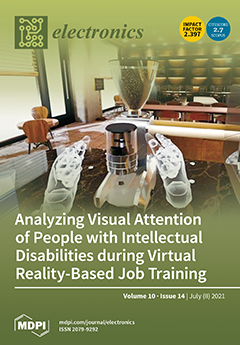This paper proposes an error-tolerant reconfigurable VDD (R-VDD) scaled SRAM architecture, which significantly reduces the read and hold power using the supply voltage scaling technique. The data-dependent low-power 10T (D
2LP10T) SRAM cell is used for the R-VDD scaled architecture with the
[...] Read more.
This paper proposes an error-tolerant reconfigurable VDD (R-VDD) scaled SRAM architecture, which significantly reduces the read and hold power using the supply voltage scaling technique. The data-dependent low-power 10T (D
2LP10T) SRAM cell is used for the R-VDD scaled architecture with the improved stability and lower power consumption. The R-VDD scaled SRAM architecture is developed to avoid unessential read and hold power using VDD scaling. In this work, the cells are implemented and analyzed considering a technologically relevant 65 nm CMOS node. We analyze the failure probability during read, write, and hold mode, which shows that the proposed D
2LP10T cell exhibits the lowest failure rate compared to other existing cells. Furthermore, the D
2LP10T cell design offers 1.66×, 4.0×, and 1.15× higher write, read, and hold stability, respectively, as compared to the 6T cell. Moreover, leakage power, write power-delay-product (PDP), and read PDP has been reduced by 89.96%, 80.52%, and 59.80%, respectively, compared to the 6T SRAM cell at 0.4 V supply voltage. The functional improvement becomes even more apparent when the quality factor (QF) is evaluated, which is 458× higher for the proposed design than the 6T SRAM cell at 0.4 V supply voltage. A significant improvement of power dissipation, i.e., 46.07% and 74.55%, can also be observed for the R-VDD scaled architecture compared to the conventional array for the respective read and hold operation at 0.4 V supply voltage.
Full article





